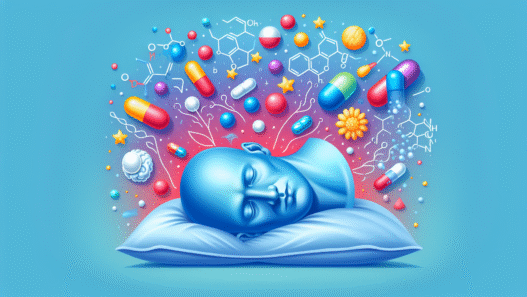Understanding CoQ10 Deficiency
CoQ10 (Coenzyme Q10) deficiency has a variety of clinical manifestations and can be attributed to both genetic and non-genetic factors. Understanding CoQ10 deficiency is essential for those concerned with their vitality and aging process.
Clinical Manifestations of Deficiency
The clinical implications of CoQ10 deficiency can be quite severe. Research has identified five major clinical phenotypes associated with CoQ10 deficiency, each presenting unique symptoms and complications. Individuals typically respond to CoQ10 supplementation (PubMed Central):
- Encephalomyopathy: Combination of muscle weakness and neurological dysfunction.
- Severe Infantile Multisystemic Disease: Involves multiple organs and systems in infants.
- Cerebellar Ataxia: Coordination and balance disorders.
- Isolated Myopathy: Muscle weakness without additional symptoms.
- Nephrotic Syndrome: Kidney disorder characterized by excessive protein loss in urine.
For those interested in improving their energy levels and overall vitality, CoQ10 supplementation could be beneficial. Visit our section on CoQ10 supplements for energy for more details.
Genetic Causes of CoQ10 Deficiencies
Genetic mutations are a primary cause of CoQ10 deficiency. These mutations can affect the biosynthesis pathway of CoQ10, leading to various clinical manifestations. Specific genes have been identified as culprits in these deficiencies, such as mutations in PDSS2, COQ9, and ADCK3/CABC1.
Among the conditions caused by genetic mutations:
- Encephalomyopathy: Often related to PDSS2 mutations.
- Childhood-Onset Cerebellar Ataxia: Commonly linked to ADCK3/CABC1 mutations.
- Multisystemic Infantile Disease: Typically associated with early-onset, severe symptoms affecting multiple organs.
- Glomerulopathy: Kidney-related issues leading to nephrotic syndrome.
- Myopathy: Muscle-related complications alone.
Patients with specific genetic mutations, such as PDSS2 and COQ9, show varying responses to CoQ10 replacement therapy, with some not improving significantly despite treatment (PMC). For more on the benefits of CoQ10, refer to our article on CoQ10 benefits for skin.
| Gene Mutation | Associated Condition | Response to CoQ10 |
|---|---|---|
| PDSS2 | Encephalomyopathy | Poor |
| COQ9 | Severe Infantile Multisystemic Disease | Poor |
| ADCK3/CABC1 | Cerebellar Ataxia | Mild Improvement |
By understanding the clinical and genetic facets of CoQ10 deficiency, individuals aged 35–65 concerned with aging and vitality can make informed decisions about CoQ10 supplementation. Further reading on genetic influences and the aging process can be found in coq10 and aging process.
Benefits of CoQ10 Supplementation
Enhancing Mitochondrial Function
CoQ10 supplementation plays a crucial role in enhancing mitochondrial function, particularly among individuals with primary defects in the CoQ10 biosynthetic pathway. CoQ10 acts as an electron carrier within the mitochondrial respiratory chain, helping to restore electron flow and boost mitochondrial antioxidant capacity. This function is vital for maintaining efficient energy production and protecting cells from oxidative stress (PMC).
| Aspect | Details |
|---|---|
| Role | Electron carrier in mitochondrial respiratory chain |
| Benefits | Increases mitochondrial antioxidant capacity, restores electron flow |
| Key Source | Inner mitochondrial membrane |
Supplementation Benefits:
- Improves mitochondrial energy production
- Guards cells against oxidative damage
- Enhances overall mitochondrial efficiency
For more information on CoQ10’s role in cellular health, visit our article on coq10 and cellular health.
Treatment for Specific Conditions
CoQ10 supplementation has been shown to provide therapeutic benefits for various conditions, owing to its ability to enhance cellular energy production and act as an antioxidant.
Fibromyalgia: CoQ10 supplementation may decrease pain, fatigue, and morning tiredness in patients suffering from fibromyalgia (NCBI Bookshelf).
Heart Failure: In patients with moderate-to-severe heart failure, CoQ10 supplementation in conjunction with standard therapy is associated with reduced symptoms, fewer major adverse cardiovascular events, improved functional capacity, enhanced endothelial function, and better left ventricle contractility (NCBI Bookshelf).
PVFS (Post-Viral Fatigue Syndrome): CoQ10 plays a key role in cellular energy production and helps protect mitochondria from oxidative stress, showing promise in alleviating symptoms in some PVFS patients (PMC).
| Condition | Benefits of CoQ10 |
|---|---|
| Fibromyalgia | Reduces pain, fatigue, morning tiredness |
| Heart Failure | Improves symptoms, reduces adverse events, enhances heart function |
| PVFS | Mitigates symptoms, boosts cellular energy, protects mitochondria |
For a deeper dive into how CoQ10 aides in heart health, check out our coq10 and heart health article.
Considering the broad therapeutic potential of CoQ10, it’s clear that incorporating this supplement can have significant benefits for individuals dealing with specific health conditions or simply looking to enhance their overall vitality. Visit our guide on the best coq10 supplements to find the right choice for your needs.
Mechanisms of CoQ10 Action
Coenzyme Q10 (CoQ10) plays a pivotal role in mitochondrial function and overall cellular health. Understanding the mechanisms through which CoQ10 operates helps to appreciate its importance in energy production and antioxidative defense.
ATP Synthesis and Oxidative Stress
CoQ10 is a key component of the mitochondrial respiratory chain, where it facilitates the production of ATP, the primary energy currency of the cell. Studies indicate that varying degrees of CoQ10 deficiency can lead to impairments in ATP synthesis and induce oxidative stress (PubMed Central). In simpler terms, lower levels of CoQ10 can disrupt the energy production process, making cells less efficient and more susceptible to damage.
Residual levels of CoQ10 also play a significant role in oxidative stress. In vitro studies show that cells with 30-50% residual CoQ10 content experience maximal increases in reactive oxygen species (ROS) production, leading to cell damage. This highlights the importance of maintaining adequate CoQ10 levels to mitigate oxidative stress and its detrimental impacts.
To delve deeper into the ATP synthesis process, CoQ10 receives electrons from various enzymes involved in metabolic pathways within mitochondria, including dihydroorotate dehydrogenase (linked to pyrimidine biosynthesis) and electron transfer flavoprotein-dehydrogenase (involved in fatty acid β-oxidation and amino acid catabolism) (NCBI PMC). This intricate process underscores CoQ10’s role in connecting energy production with broader metabolic activities.
Role in Antioxidant Defense
Apart from its crucial role in ATP synthesis, CoQ10 is integral to the body’s antioxidant defense system. It helps to neutralize free radicals and reduce oxidative damage, which is particularly vital as oxidative stress is a contributor to aging and various age-related diseases (NCBI PMC).
In cases of primary CoQ10 deficiency, the activity and levels of sulfide:quinone oxidoreductase (SQOR) within mitochondria are reduced, leading to an increase in hydrogen sulfide (H₂S) levels and a decrease in glutathione (GSH) levels. CoQ10 supplementation has been shown to regulate these pathways, enhancing antioxidant capacity and preventing conditions like renal failure in CoQ-deficient models.
Given its role in energy production and antioxidant defense, CoQ10 supplements are recommended for supporting mitochondrial health and vitality. For those interested in integrating CoQ10 into their routine, explore our guide on the best coq10 supplements. Additionally, CoQ10’s benefits extend to skincare, with promising effects on coq10 benefits for skin and coq10 antioxidant benefits.
By understanding these mechanisms, adults aged 35-65 can better appreciate the profound impact of CoQ10 on both mitochondrial function and overall cellular health. For further information, explore our resources on coq10 and cellular health and the coq10 anti-aging properties.
Therapeutic Potential of CoQ10
Restoring Electron Flow
Coenzyme Q10 (CoQ10) plays a critical role in mitochondrial function, particularly in the mitochondrial respiratory chain (MRC). As an electron carrier, CoQ10 facilitates the transfer of electrons between complex I and complex II to complex III (PubMed). This electron flow is fundamental for the production of adenosine triphosphate (ATP), the energy currency of the cell.
In individuals with mitochondrial disorders, the efficiency of electron flow is often compromised due to defects in the MRC. CoQ10 supplementation has shown efficacy in these patients by restoring proper electron flow, thereby enhancing mitochondrial function and energy production.
| Condition | Impact of CoQ10 Supplementation |
|---|---|
| Mitochondrial Disorders | Restores electron flow |
| General MRC Defects | Enhances mitochondrial function |
| Primary CoQ10 Deficiency | Improves ATP synthesis |
Increasing Mitochondrial Antioxidant Capacity
CoQ10 is not only an electron carrier but also a potent lipid-soluble antioxidant. It helps to neutralize free radicals and reduce oxidative stress within the mitochondria. By increasing the mitochondrial antioxidant capacity, CoQ10 protects mitochondrial DNA, lipids, and proteins from oxidative damage. This is particularly beneficial for individuals concerned with aging and vitality, as oxidative stress is a significant factor in the aging process.
Enhanced antioxidant protection can lead to improved cellular health and reduced symptoms associated with aging. For those looking to optimize their vitality and combat aging, CoQ10 supplementation can be a highly effective strategy. Learn more about CoQ10’s antioxidant benefits in our detailed article on coq10 antioxidant benefits.
| Antioxidant Function | Benefit |
|---|---|
| Neutralizes Free Radicals | Protects mitochondrial components |
| Reduces Oxidative Stress | Improves cellular health |
| Increases Antioxidant Capacity | Mitigates aging effects |
For additional information on how CoQ10 impacts mitochondrial function and the aging process, explore our articles on coq10 and cellular health and coq10 anti-aging properties. Continue reading to understand how CoQ10 can also influence skin health and heart health.
Implications for Energy Production
Metabolic Pathway Involvement
Coenzyme Q10 (CoQ10) is integral to the mitochondrial respiratory chain, acting as an electron carrier. Located primarily in the inner mitochondrial membrane, CoQ10 helps regulate the formation of super-complexes like I + III. This complex formation aids the dynamic distribution of CoQ molecules, contributing to its role in mitochondrial function and energy production.
CoQ10 participates in several key metabolic pathways within mitochondria, including:
- Sulfide Oxidation Metabolism
- Pyrimidine de Novo Biosynthesis
- Fatty Acid β-Oxidation
- Amino Acid Catabolism
- Glycine Metabolism
- Proline, Glyoxylate, and Arginine Metabolism
Dysfunction in these pathways can lead to metabolic diseases and CoQ10 deficiencies. CoQ10 supplementation has shown regulatory effects on enzymes linked to sulfide metabolism, potentially offering therapeutic benefits for conditions with disrupted H2S metabolism (NCBI PMC).
| Pathway | Enzymatic Involvement |
|---|---|
| Sulfide Oxidation | Sulfide Quinone Reductase |
| Pyrimidine Biosynthesis | Dihydroorotate Dehydrogenase |
| β-Oxidation | Electron Transfer Flavoprotein-Dehydrogenase |
| Amino Acid Catabolism | Electron Transfer Flavoprotein-Dehydrogenase |
| Proline Degradation | Proline Dehydrogenase |
Impact on Cellular Processes
CoQ10’s role extends beyond just energy production. It is crucial for a variety of cellular processes that affect overall cellular health. CoQ10 accepts electrons from NADH and FADH2 and subsequently transfers them to cytochrome c. This electron transfer generates a proton motive force that drives ATP synthesis, the primary energy currency in cells.
The formation of super-complexes that contain CoQ10 allows for efficient electron transfer and energy production. These complexes manage CoQ10 distribution dynamically, dividing it into pools attached to the super-complexes for NADH oxidation and a free pool for other enzymes (NCBI PMC).
Proper functioning of these pathways is vital for maintaining cellular vitality. Adequate CoQ10 levels can contribute to optimal energy production and may have significant implications for overall health, anti-aging, and vitality, making it a valuable nutrient for adults aged 35–65 concerned with aging and vitality.
For more detailed information on coq10 and cellular health and coq10 benefits for skin, explore our dedicated sections. If you’re interested in integrating CoQ10 supplements into your routine, learn more about the best coq10 supplements.
CoQ10 and Mitochondrial Disorders
Link to Mitochondrial Respiratory Chain
CoQ10 (Coenzyme Q10) plays a crucial role in the mitochondrial respiratory chain (MRC), a fundamental process in cellular energy production. The primary function of CoQ10 is to facilitate electron transport within the MRC, which is essential for ATP synthesis. In cases of mitochondrial disorders, there can be primary defects in the CoQ10 biosynthetic pathway. CoQ10 supplementation can be highly beneficial for these patients.
Research shows that CoQ10 and its analogues can restore electron flow in the MRC and enhance mitochondrial antioxidant capacity. This means that even for mitochondrial respiratory chain disorders not initially linked to CoQ10 deficiency, supplementing with CoQ10 can result in improved outcomes. By boosting the efficiency of the electron transport chain, CoQ10 helps reduce oxidative stress and manage symptoms of mitochondrial dysfunction.
Clinical Applications for CoQ10
Clinical applications of CoQ10 are especially relevant for addressing mitochondrial disorders. Here, the therapeutic potential lies in CoQ10’s ability to restore electron flow and bolster mitochondrial antioxidant defenses:
| Condition | CoQ10’s Mechanism of Action | Clinical Benefit |
|---|---|---|
| Primary CoQ10 Biosynthetic Pathway Defects | Restores electron flow in MRC | Improved cellular energy production |
| Mitochondrial Respiratory Chain Disorders | Increases mitochondrial antioxidant capacity | Reduced oxidative stress |
- CoQ10 supplementation is vital for patients with primary defects in the CoQ10 biosynthetic pathway (PubMed).
- The efficacy of CoQ10 has been observed even in patients with MRC disorders not directly associated with CoQ10 deficiency (PubMed).
For individuals aged 35-65 concerned with aging and vitality, understanding the role of CoQ10 in mitochondrial function can offer informed options for maintaining their health. Interested readers can learn more about specific coq10 supplements for energy, explore the coq10 anti-aging properties, and understand its role in overall cellular health.




















